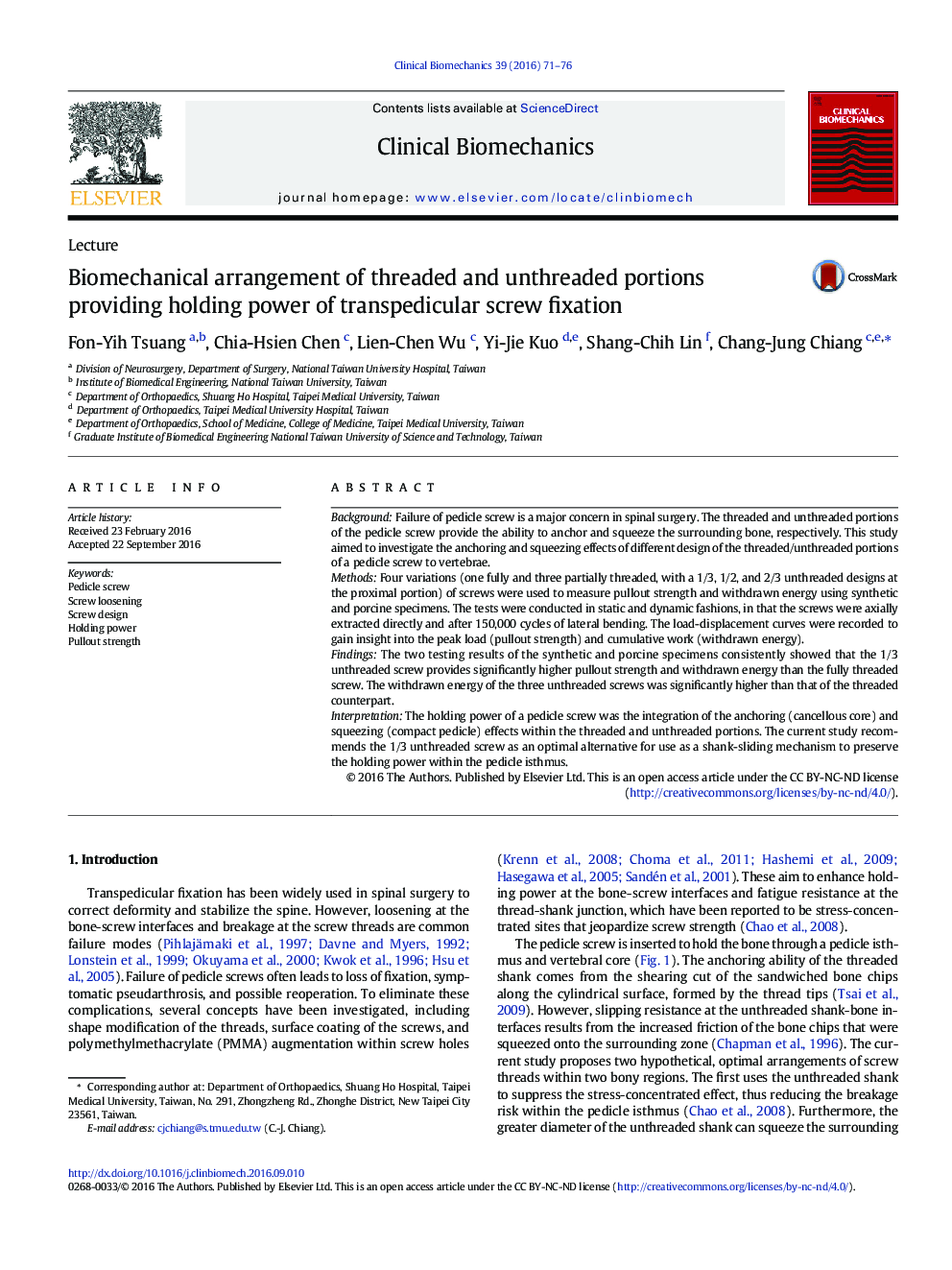| کد مقاله | کد نشریه | سال انتشار | مقاله انگلیسی | نسخه تمام متن |
|---|---|---|---|---|
| 6204575 | 1603739 | 2016 | 6 صفحه PDF | دانلود رایگان |
- Holding power of a pedicle screw was offered by anchoring and squeezing effects.
- Anchoring effect provided by thread-shearing mechanism in cancellous core.
- Squeezing effect was shake-sliding mechanism in compact pedicle.
- 1/3 unthreaded screw is an optimal design to preserve the holding power.
BackgroundFailure of pedicle screw is a major concern in spinal surgery. The threaded and unthreaded portions of the pedicle screw provide the ability to anchor and squeeze the surrounding bone, respectively. This study aimed to investigate the anchoring and squeezing effects of different design of the threaded/unthreaded portions of a pedicle screw to vertebrae.MethodsFour variations (one fully and three partially threaded, with a 1/3, 1/2, and 2/3 unthreaded designs at the proximal portion) of screws were used to measure pullout strength and withdrawn energy using synthetic and porcine specimens. The tests were conducted in static and dynamic fashions, in that the screws were axially extracted directly and after 150,000Â cycles of lateral bending. The load-displacement curves were recorded to gain insight into the peak load (pullout strength) and cumulative work (withdrawn energy).FindingsThe two testing results of the synthetic and porcine specimens consistently showed that the 1/3 unthreaded screw provides significantly higher pullout strength and withdrawn energy than the fully threaded screw. The withdrawn energy of the three unthreaded screws was significantly higher than that of the threaded counterpart.InterpretationThe holding power of a pedicle screw was the integration of the anchoring (cancellous core) and squeezing (compact pedicle) effects within the threaded and unthreaded portions. The current study recommends the 1/3 unthreaded screw as an optimal alternative for use as a shank-sliding mechanism to preserve the holding power within the pedicle isthmus.
Journal: Clinical Biomechanics - Volume 39, November 2016, Pages 71-76
